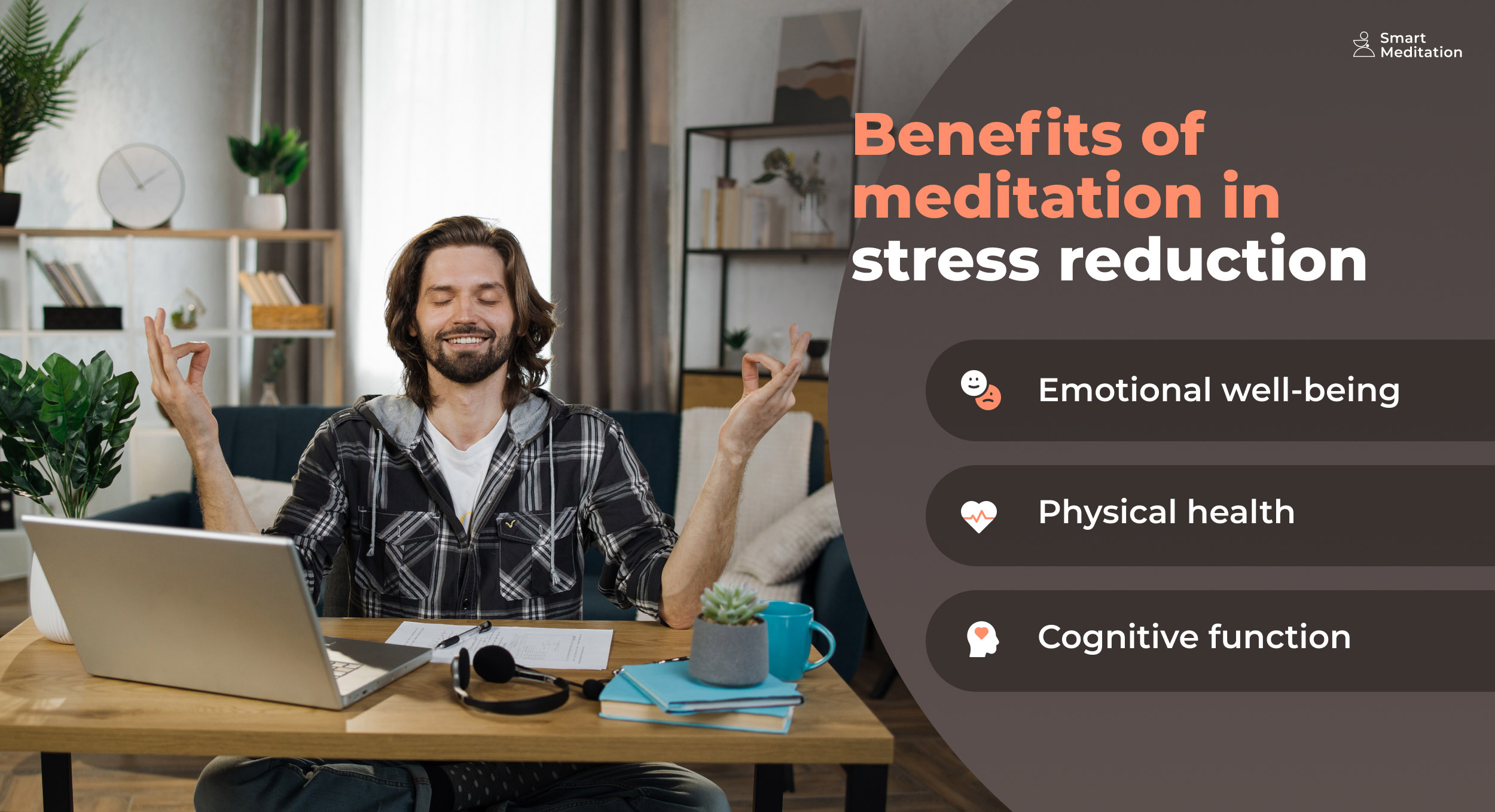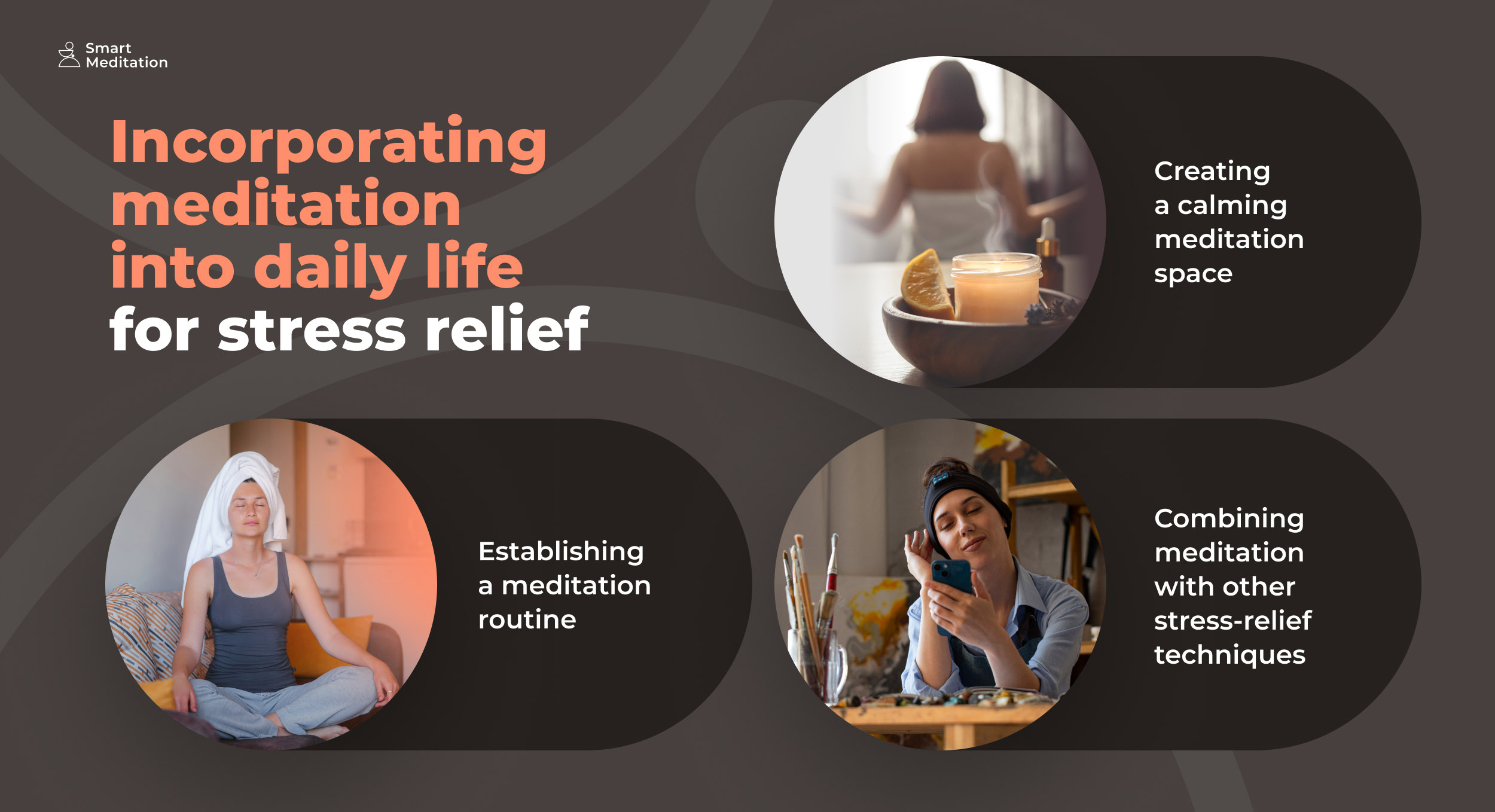
Exploring How Meditation Helps Reduce Stress: Techniques and Benefits
Stress is a very natural reaction of our body and mind to the changing environment, and sometimes it can even be good for us, driving us to think quicker and perform better. However, most of the time stress is given a negative connotation, because of how debilitating it can be when it piles up.
To combat stress, people try out many methods, both clinical and non-clinical, and definitely one of the most popular in the latter category is meditation. Meditation has been long known for its anxiety-relieving properties, but did you know it can have a major impact on our physiology as well?
In this article, we’re looking to uncover how meditation helps with stress, what useful meditation techniques you can employ, and how you can integrate them into your everyday life.
Relationship Between Meditation and Stress
Meditation is being more and more often regarded as one of the most efficient non-clinical ways of alleviating stress. And while meditation in no way should act as a direct replacement for professional anxiety treatment, it does provide its practitioners with many benefits.
At its most basic, meditation helps us calm down, enabling us to breathe more calmly, which, in turn, helps to maintain a stable blood pressure and heart rate. However, if you delve a little further, you’ll discover that there are actually much more profound changes happening in our bodies over time as well.
For instance, by cultivating inner calm and stability, meditation can help people produce less cortisol and other stress chemicals. Not to mention, it can also be tremendously helpful when battling a wide range of anxiety disorders such as Generalized Anxiety Disorder (GAD), Social Anxiety Disorder (SAD), Obsessive-Compulsive Disorder (OCD), and many others.
Benefits of Meditation in Stress Reduction
So, how does meditation reduce stress? The benefits of meditation are plentiful and can benefit your well-being in more ways than one. All benefits can be roughly broken into three categories:
Emotional Well-being
Reducing stress, which is the main cause of anxiety, is one of the most common reasons people meditate. Numerous scientific investigations also support the viability of the approach. For instance, in this eight-week study, the mindfulness meditation practice reduced cortisol levels and the inflammation that cortisol causes in our bodies, such as elevated blood pressure and heart rate. Additional studies have shown that using meditation to treat anxiety may lessen the signs of stress-related conditions including fibromyalgia, irritable bowel syndrome, and post-traumatic stress disorder (PTSD).
Physical Health
On top of that, meditation can improve sleep quality and help individuals manage insomnia. Consistent practitioners have been shown to have significant improvements in a range of sleep quality indicators, including length, efficiency, and fewer interruptions.
Meditation can also assist users in coping with discomfort and preserving their physical well-being. For instance, this research on the effects of a mindfulness meditation on pain perception showed that the participants experienced some degree of pain relief when meditating, as well as a reduction in their chronic pains.
Cognitive Function
Finally, meditation is known to have a very positive effect on one’s cognitive abilities such as concentration and analytical thinking. For instance, even simple mindfulness exercises have been shown to increase participants’ cognitive flexibility, memory, and attention span. Moreover, meditation can have a repairing function – if stress negatively affected your cognition in the past, a couple of breathing sessions a week can help you bring your abilities back to normal.

Techniques for Using Meditation to Reduce Stress
There exist many good way of how to meditate for stress and anxiety reduction, but in this section we’ll look at three of the most popular and effective ones:
Mindfulness Meditation
The mindfulness meditation approach is about getting your mind to concentrate on the present moment. This often involves the practitioner adopting a relaxed sitting position and focusing on a particular anchor, such as breathing, bodily sensations, or noises. The idea is to just acknowledge your thoughts, feelings, and physical sensations as they go through your mind and body at that very moment without attaching any judgment or meaning to them.
And if you’d like to take even one step further, you can try out guided mindfulness meditations, which we discussed in one of our previous articles. Meditation sessions that are helped by a professional instructor can make your practice even more effective.
Loving-Kindness Meditation
Another method of how to meditate to relieve stress is loving-kindness – a practice centered around fostering the feeling of kindness, goodwill, care and love for both oneself and others. It’s very simple to perform as well – it only requires taking a comfortable position and generating positive thoughts. One usually starts by recognising that you are worthy of love and sending oneself good wishes, and then extending these wishes to one’s family and friends.
Guided Meditation
Meditation practices that are assisted by a third party are commonly called guided meditation. The sessions can be conducted both online (through meditation apps, podcasts, audio tracks, live sessions with a coach) or offline (group meditation, individual sessions with a coach). As we previously discussed in our article on guided meditation, it is very flexible as it often combines various techniques like the above mentioned mindfulness, loving-kindness as well as others like body scans and mantras.
Incorporating Meditation into Daily Life for Stress Relief
Like any other habit or practice, it may take some time and effort to integrate meditation into your routine so that it becomes part of your life. Here’s what you can do to make this process more seamless:
Establishing a Meditation Routine
Meditation benefits become almost non-existent, if you practice rarely and sporadically; moreover, without a set schedule, it’s easy to lose interest and stop meditating completely. That’s why you need to have that schedule – it adds a degree of responsibility, which tends to make us more committed to the practice. Also remember that you don’t have to do it every day; you can still maintain consistency even if you schedule your sessions for just a couple of times a week.
Creating a Calming Meditation Space
A good meditation corner is another cornerstone (pun intended) of consistent practice. Find a place that is calm and free from electronics or anything else that can cause a distraction. Make sure this space feels both cozy and unique by decorating it with your favorite items as well as candles, incense, plants or even small water fountains. And remember to maintain the area as well; a messy, congested environment can greatly diminish the experience.
Combining Meditation with Other Stress-Relief Techniques
It’s a good idea to engage in other activities, such as mindful dining, nature walks, and creative expression, while you’re not practicing meditation. While taking a walk in the park or the woods might help you feel more a part of and at one with nature, focusing on how the meal feels in your tongue can help you appreciate the moment more. You can also be in harmony with yourself and your ideas and feelings by engaging in creative writing, painting, or sketching.

Conclusion
Meditation is one of the best and most studied non-clinical ways of reducing anxiety. And how does meditation help with stress? It positively affects both our physiology and mental well being, regulating our heart rate, blood pressure, cortisol levels as well as making us feel at peace with ourselves and the world. Feel free to experiment with many different techniques: if you want to keep it simple, try out mindfulness and loving-kindness exercises. And if you want extra involvement from other people, don’t hesitate to get into guided meditation.
Finally, remember that when meditating, consistency is key. For maximum effect, try to integrate the practice into your daily life as much as possible – set a schedule, create an atmospheric meditation area, and combine your efforts with other calming activities and nature walking or mindful eating.






